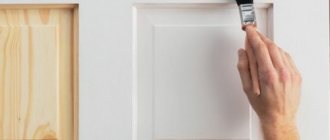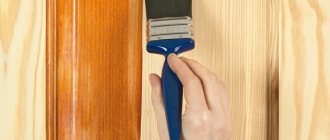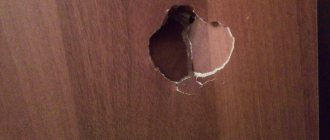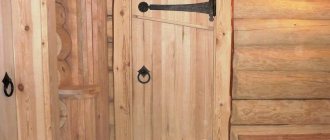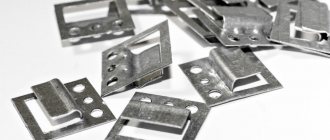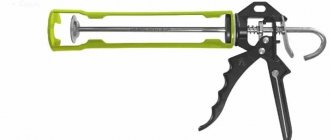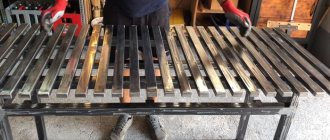Wooden doors bring a special charm to the interior, but only if they look decent and the paint is applied carefully.
Cracks in the paintwork, faded shade and peeling paint on the doors can ruin the entire impression of the room.
There is a need to remove old paint. For this purpose, proven chemical, thermal and mechanical methods are used.
We'll tell you more about how to remove old paint from a wooden door in this article.
Should I delete it?
When choosing a method for removing old paint, the question may arise: does it need to be removed at all? The answer to this question and the choice of coating removal method depend on the following factors:
- door surface type;
- condition of the coating;
- type of paint used;
- adhesion strength of the coating to wood;
- thickness and number of layers.
The most difficult thing will be to remove the layer of paint coating, which has good adhesion to the material, and the door itself has a complex surface topography and a lot of decorative elements.
If the door is designed for subsequent painting, then,
depending on the condition of the coating, you can get by with sanding it with sandpaper .
This is possible when the paint was applied carefully in one layer and does not contain peeling or chipping. The old coating is simply treated with sandpaper, and a new layer can be applied. Old layers of paint that, due to atmospheric influences and time, have significant defects (chips, cracks, swelling) will have to be removed. It is also necessary to remove too thick a layer of paintwork that has hardened streaks and other results of careless handling of the door in the past.
It happens that new door paint is incompatible with the old one. This is also a reason to completely remove paint from wooden doors.
Consumables
Rags for removing dust, polyethylene to protect furniture and other objects, tape - it’s difficult to immediately say why it might be needed, but it’s a fact that it’s useful for something.
There are various removers available for old paint. Try to determine the type of paint and varnish material and select the appropriate chemistry.
Preparatory work
Preliminary preparation of the door requires cleaning it from dust and dirt. also necessary to clean off the swollen layers that have separated from the base. If one of the sides will be hidden in the future, for example, by leatherette upholstery, you don’t have to carefully remove the paint - just clean off the peeling.
Having decided on the nature and scope of work, you should select tools for removing paintwork.
You will definitely need:
- rags;
- putty knife;
- personal protective equipment (respirator, special glasses, gloves).
For the chemical method, you will need reagents, a bucket of water, and a brush for applying a special composition. The mechanical and thermal methods will require a special tool (grinding device, drill with attachments, industrial hair dryer).
Painting a wooden door
Oil paint is suitable for painting an outdoor wooden door because it protects the wood from rain, snow, and frost. Prevents the appearance of the shashel tree beetle. Doors are painted:
- With a brush. Stir the paint in the jar, pour a little into a small wide container and, lightly dipping it into the paint, paint the product, moving the brush in one direction. The brush is convenient for painting small details and curls.
- With a roller. If the surface is flat and large, use a roller to apply an even layer. To do this, paint is poured into a special trough and the roller is lightly dipped into the paint, and the object is painted by moving the hand in one direction.
- With a spray gun. The paint is mixed well, and if it is too thick, dilute it a little with a suitable solvent. Pour it into the spray gun compartment, set the desired pressure and the size of the droplets when spraying by test painting an unnecessary piece of wood. Put on protective equipment (goggles, respirator, gloves) and paint, moving your hand with the gun from bottom to top.
Attention!
When drips appear, they are immediately removed with a rag so that they do not harden into unsightly drops. Spray painting is repeated after 15-20 minutes if the wood is not completely painted.
How to clean at home?
To remove old paint from wooden doors, one of three methods is used:
- Mechanical impact.
- Use of chemical reagents.
- Exposure to high temperatures.
Each option has its own strengths and weaknesses. Depending on the specific situation, a suitable method, appropriate instrument and preparations are selected.
Thermal methods
The thermal method of cleaning a wooden door from paint involves using an industrial hair dryer and a spatula.
Work order:
- Plug in the hair dryer.
- Direct a stream of hot air at the door area.
- When heated, the paint will begin to swell and come off, making it easier to scrape off with a spatula.
- The processing process is repeated in the next zone.
After the entire door has been processed, it is necessary to finalize the missing fragments. The surface is cleaned with sandpaper.
If you don’t have an industrial hair dryer, you can use an iron, first placing foil between the sole of the device and the door.
Advantages of the method:
- environmental friendliness;
- no extensive experience required.
Flaws:
- it is necessary to use a special tool;
- it is not always possible to use on difficult surfaces;
- there is a possibility of damage to the wood if the temperature setting is incorrect;
- may require modification.
How to clean a surface mechanically?
The mechanical method involves removing a layer of paint using tools: from a regular spatula to a drill with attachments and other special equipment. Using a power tool speeds up the process, but may not be able to handle difficult areas.
Disadvantages of the method:
- dust formation;
- high probability of physical damage to the surface;
- need a tool;
- the need to use protective equipment.
Advantages:
- environmental friendliness;
- Having a good tool speeds up the process.
Suitable paint stripping tools include:
| Tool | Features of application |
| Scrapers or cycles | For a flat surface |
| Angle grinder | Gives a rough finish, provides access to corners |
| Belt sander | Removing paint from hard-to-reach places |
| Vibratory grinding machine | Delicate processing, removing a thin layer of coating |
| Grinder with brushes | Universal processing |
Removing a multi-layer coating using only sandpaper or a spatula is labor-intensive and ineffective.
The best solution to the problem is to choose a chemical method or use a power tool.
How to clean with chemicals?
Chemical washing is carried out using solvents. The technology is based on the destruction of the structure of the dye itself by chemicals:
- The solution is applied to the surface with a brush.
- Maintain the required time, which depends on the composition and type of paint.
- Using a spatula or scraper, remove the coating that has swollen under the influence of the reagents.
- Clean off any remaining paint.
If the instructions for the wash indicate that the surface needs additional wiping with white spirit or another solvent, this must be done.
Advantages of the method:
- speed of action of the chemical composition;
- ease of use;
- no excessive effort required;
- no special skills required.
Flaws:
- toxicity of chemicals;
- an allergic reaction is possible;
- mandatory availability of personal protective equipment;
- the need to organize good ventilation during the application of products;
- acrid odor;
- Solvents require special disposal.
Despite the fairly high efficiency, the use of chemicals often requires surface finishing mechanically.
Before using a solvent, it is important to clarify whether it is suitable for a particular type of paint, and whether the condition of the wood allows this cleaning method to be used.
The selection of the reagent should take into account the type of wood and the condition of the material . Rotten wood may not withstand intense chemical exposure.
How to remove old paint from a door: tips, removal secrets, instructions
During renovation work, it often turns out that the old door does not suit the new environment either in style or color. But it does not always require replacement. If the canvas is made soundly and of high quality, there is no need to get rid of an expensive item and spend money on purchasing a new one, but only carry out procedures to clean it and prepare it for new painting. In this case, they take into account the material from which the doors are made, the depth of penetration of the old paint layer into the canvas, and the number of layers.
How to avoid damaging the door leaf?
The wooden surface has a characteristic texture and is susceptible to harsh mechanical stress.
When working with natural materials, the following points should be taken into account:
the spatula should be directed at an angle to the surface;- movements should be in the direction of the fibers;
- to process difficult areas, it is necessary to use a special tool with a wedge-shaped nozzle;
- Particular care should be taken when working with soft wood, as well as with decorative elements that are milled.
In addition to updating the paint, you should pay attention to the condition of the fittings. If necessary, replace or restore metal elements.
Heat treatment
To clean wood, you can heat it. As a result, the paint material will adhere to the base much worse. Cracks will appear on the coating, and it can be removed using a special tool (spatula, chisel).
When carrying out heat treatment, there are several important points to consider.
- If the coating begins to char instead of peeling off, the cleaning method will have to be changed. In this case, you can use chemicals.
- Goggles and protective gloves must be used. Also, thorough ventilation is required during and after work. When varnish heats up, it can release substances that are hazardous to human health. It is also worth considering that pieces of paint and varnish material may bounce off the base. You should also remember about fire safety.
The work may require special equipment.
Construction hairdryer. Such a device can heat surfaces much more than a conventional household appliance.
Gas or gasoline burner. The price for such devices is quite reasonable
However, it should be borne in mind that you need to work with the burner as carefully as possible, otherwise you can be seriously injured.
Heat treatment has one important advantage - the work is carried out very quickly. However, the varnished base should not be allowed to overheat, otherwise a fire may occur.
You should work using both hands. One needs to hold the device, the second - a spatula, with which you will remove the paintwork.
See below for a master class on removing varnish from a wooden surface.
Types of washes
Paint is best removed with special compounds that react with it. The canvas softens, but neither universal nor specialized removers have any effect on the structure of the wood. The first products are suitable for removing various materials based on water or solvent. Special removers are available for cleaning certain varnishes and paints. They contain substances that affect the structure of a particular coating.
Powder
Paint and varnish removers are available in different forms. The consistency of the washes is liquid, which cleans surfaces decorated with carvings well. Varnishes cope with several layers of cracked old material. Dry wash is more effective, suitable for cleaning large areas, and applies evenly when water is added.
Paste
In order not to dilute the powder with liquid to obtain the desired consistency, you can purchase a ready-made product in the form of a paste at a hardware store. The work is carried out in stages:
- The composition is applied to the surface with a regular brush.
- The door is wrapped in plastic wrap for 3 or 4 hours.
- The paint is removed with a sharpened spatula without pressing the tool.
- Water is combined with vinegar in a ratio of 5 to 1 and the remaining paste is removed.
The entire coating is not always removed at one time; in this case, the surface is sanded with sandpaper.
Using a remover, remove 8-10 layers of varnish or paint. You can make your own paste from caustic soda. The product is dissolved in water, oatmeal is added.
Gel
To remove paint, it is convenient to apply products with a jelly-like consistency to horizontal and vertical surfaces of different thicknesses. One of the inexpensive but effective Prestige gels does not require mixing or shaking before use. The remover is applied to the paint in a layer of 3 mm. After 3-5 minutes, the material is cleaned off with a spatula.
Syntilor Light gel removes polyurethane, acrylic, epoxy coatings, acts very quickly, and washes off enamel and water-based paint from wooden surfaces. The product penetrates into the deep layers of varnish, softening them. There are no acids in the gel; the composition is applied using a roller or brush in a layer of 1 mm.
Special fluids
To remove paint on wooden surfaces that have many small parts or carvings, it is recommended to use liquid reagents instead of paste or powder removers.
Before applying the composition to the door, wipe off dust and dirt, cover the metal parts and begin cleaning:
- The reagent is collected onto a brush and distributed over the surface.
- The canvas is wrapped in polyethylene and left for the time specified in the instructions for the liquid.
- Pry off the paint with a spatula and carefully remove it.
When using washes, safety precautions cannot be ignored, since they contain reactive substances. After removing the old coating, the wood is wiped with water and vinegar, primed, varnished, and painted.
